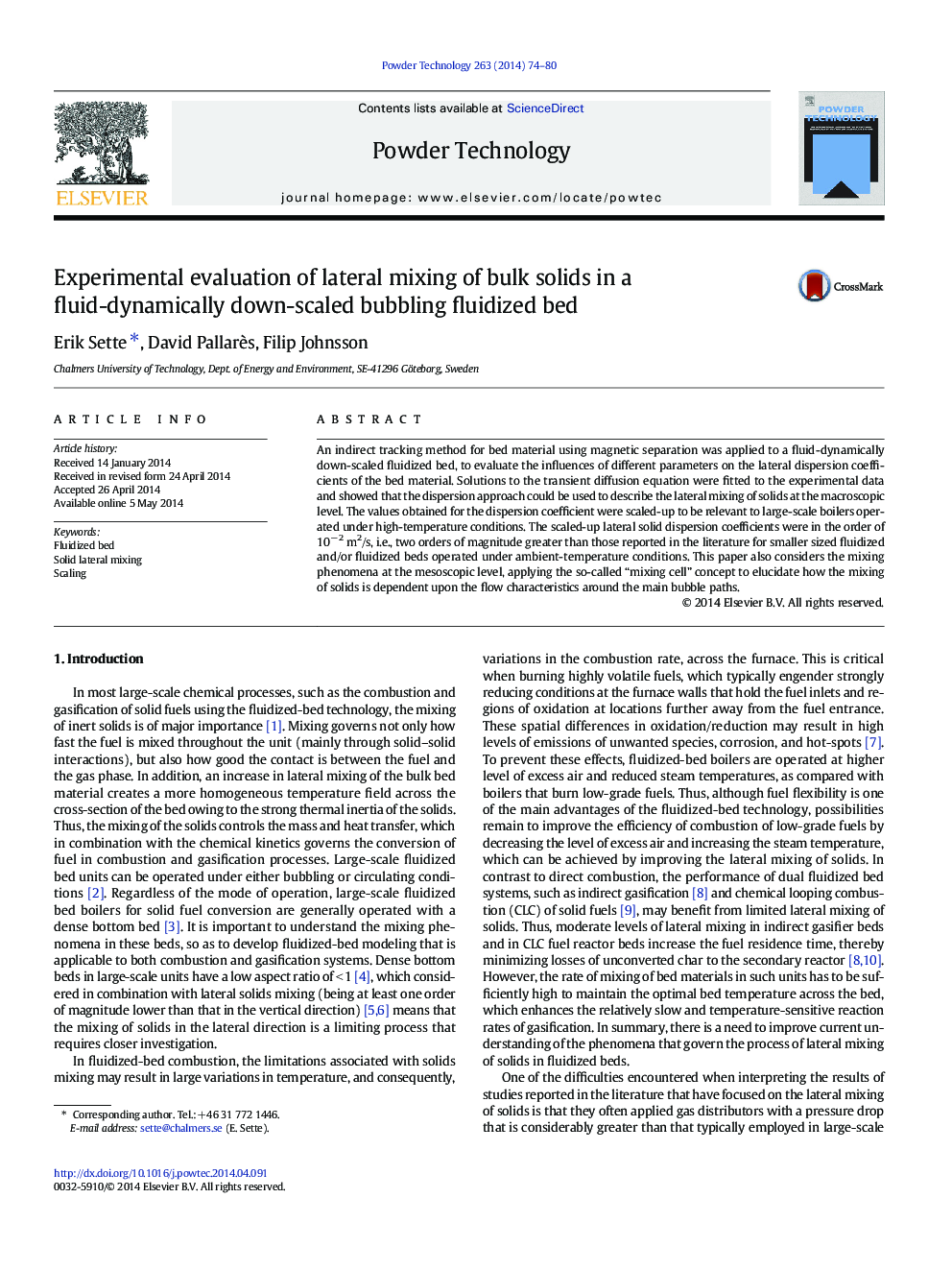| Article ID | Journal | Published Year | Pages | File Type |
|---|---|---|---|---|
| 236048 | Powder Technology | 2014 | 7 Pages |
•An indirect tracking method for bed material based on magnetic tracers is presented.•Experiments are conducted in a fluid-dynamically down-scaled cold flow model.•Solids lateral mixing is dispersive (D~10–2 m2/s) on a macroscopic level.•Solids lateral mixing increases with fluidization velocity and bed height.
An indirect tracking method for bed material using magnetic separation was applied to a fluid-dynamically down-scaled fluidized bed, to evaluate the influences of different parameters on the lateral dispersion coefficients of the bed material. Solutions to the transient diffusion equation were fitted to the experimental data and showed that the dispersion approach could be used to describe the lateral mixing of solids at the macroscopic level. The values obtained for the dispersion coefficient were scaled-up to be relevant to large-scale boilers operated under high-temperature conditions. The scaled-up lateral solid dispersion coefficients were in the order of 10− 2 m2/s, i.e., two orders of magnitude greater than those reported in the literature for smaller sized fluidized and/or fluidized beds operated under ambient-temperature conditions. This paper also considers the mixing phenomena at the mesoscopic level, applying the so-called “mixing cell” concept to elucidate how the mixing of solids is dependent upon the flow characteristics around the main bubble paths.
Graphical abstractFigure optionsDownload full-size imageDownload as PowerPoint slide
